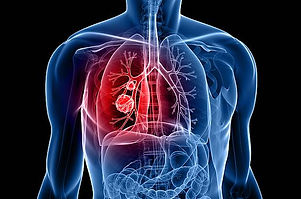Pulmonary Dysfunction
Services

Can't find your condition?
Pulmonary Dysfunction
Lung conditions can be detrimental to your health, as breathing is crucial to your life. However, these symptoms can be managed and improved.
Common conditions we cover:
A chronic lung disease that is caused by inflammation and muscles tightening around the airways, making it difficult for you to breathe.
A common lung condition that causes difficulties in breathing as the lungs sustain damages through factors such as smoking, air pollution etc.
A chronic lung disease that affects the air sacs in the lungs, causing you to have difficulties in breathing.
It is a lung condition where the airways of the lungs have been inflamed or damaged for an extended time.
It is a lung condition where there is high blood pressure specifically in the blood vessels that supply the lungs.
What you can EXPECT
Clinical approach utilising skilled, specific hands-on techniques with the benefits of diagnosing and treating soft tissues and joint structures for purpose of modulation pain, increasing range of motion (ROM), reducing or eliminating soft tissue inflammation, inducing relaxation and facilitating movement and improving function.
Relief pressure on one or many spinal discs and pinched nerves of the spinal column.
Increase blood flow in tissues, decrease inflammation and pain and promote vasoconstriction which increases blood flow.
Helps with speeding up the healing process from the increase in blood flow, decreases in pain from the reduction of swelling and oedema.
Uses a mid-frequency electrical signal to treat muscular spasms and strains, producing a massaging effect over the affected area stimulating the secretion of endorphins which blankets the pain away.
Help with decreasing pain and muscle spasm, increasing circulation and muscle flexibility and improving overall flexibility.
Strength, mobility, flexibility training and cardiovascular conditioning will be taught to improve your physical strength, reduce pain and avoid the recurrence of future injury.
